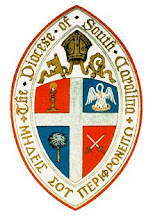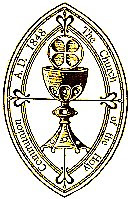Okinawan Culture and Traditions
[An introduction for Americans visiting or being stationed in Okinawa, Japan]
©1995, Francis C. Zanger, D.Min.
Welcome to Okinawa! Whether this is your first time here or your fourth, there is always more to learn here, about the country and its people. This pamphlet is designed to give you a small smattering of knowledge about the island where you will spend the next months or years, and should help you take the first steps towards being a good representative of our nation during your time in Okinawa.
In Okinawa, the primary language spoken is Japanese, although many elders may still speak some Ho-gan, or Okinawan. Japanese as a language is more difficult to learn than, say, Spanish or German, because it isn't related to English. However, many Americans living here or stationed here in the military do learn a good deal of it, and the Okinawans really appreciate it when we try to speak their language while we're here in their country.
One of the harder things for most Americans to deal with is the fact that we can't read the signs-- we can't tell what street we're on, or if the store in front of us sells shoes or truck parts. Young Okinawan school children learn four different alphabets-- Kanji, the complicated Chinese characters with each character being, not a sound, but a thing or a concept; Hiragana, used for words with Japanese roots; Katakana, used for words with non-Japanese roots; and Romaji, which is what they call our alphabet. An Okinawan high school graduate has had to memorize a minimum of eight thousand Kanji.
Religion
Religion in Okinawa is, for many Americans, a pretty confused issue. An Okinawan will typically have a Shinto ceremony at birth and a Buddhist funeral, with maybe a Christian-style wedding in the middle, while maintaining a shrine to the hinukan, the Okinawan god of fire, in the kitchen by the stove. For Americans, we are pretty much one thing or another-- if we are Christians, we aren't Buddhists, if we are Muslims, we aren't Jewish. Okinawa has many shrines and religious sites, primarily Shinto or Buddhist; some are as elaborate as Futenma-gu Temple, while some may consist of holy groves of trees where the shrine might be no more than a few stones piled atop one another. There is an interesting shrine in a cave behind the McDonalds on Rte 58, north of Camp Kinser, which is open to the public-- it's just a tiny cave with two small stone altars. People go there to light incense to the spirit of a former queen of Shuri who lived out her days in that cave, awaiting her husband's return from war. He never returned, and the Okinawans believe that her spirit still resides there.
If you visit a shrine or a temple, the most important thing is to remember that you're in a place of worship and behave accordingly. Take off your hat, be quiet and respectful, and the Okinawans will happily welcome you. The best thing to do is to watch-- watch what the people around you are doing, and follow suit. If they take off their shoes before entering, don't wear yours, and so on.
Okinawan music
Okinawan traditional music sounds strange to American ears-- the melodies, and the instruments they're played on, are very different from Western music. There are a lot of traditional folk dances that continue to be popular, especially around the O-Bon Festival in late summer. One of the best places to see traditional dancing and to hear Okinawan folk instruments is at the Ginowan Convention Center, near Futenma. Such events are frequently advertised in magazines such as This Week in Okinawa and the Japan Update.
There is one traditional musical form that Americans have been involved in-- Eisa Dancing. Eisa Dancing is the kind of dance they showed a little of in the movie Karate Kid-2, and there are “international" groups that welcome Americans to join the Okinawan performers.
Karate
Karate was first developed in Okinawa in the Fourteenth or Fifteenth Century, as a self-defense art called te. At that time, the Ryukyu Kingdom--Okinawa-- was engaged in trade with both China and Southeast Asia, and the local Okinawan forms were combined with other Asian forms of self-defense, especially Chinese. When the Japanese Satsuma clan subjugated the Okinawans, they made it illegal for the local people to own any weapons. They also made the study of martial arts illegal. However, the Okinawans continued to train and study, passing down the forms from father to son. The traditional karate weapons, such as the nunchaku, are all derived from farm implements-- the nunchaku were rice flails, for instance.
Karate became widespread in Okinawa following Japanese annexation in 1879, and was introduced to Japan in 1922 by Gichin Funakoshi, and was first recognized as an official martial art by the Nippon Butoku Kai in 1931. After World War II, Judo and Kendo (Japanese fencing) were declared illegal by the American occupying government, and many people turned to Karate.
There are two main schools of Karate in Okinawa, Shorin-ryu (Shuri-te) and Shorei-ryu (Naha-te). Shorin-ryu uses faster movements, while Shorei-ryu is slower with more flowing movements. Instruction is available on base at all levels, and a number of Americans stationed here with the Marines have left after three years with brown or black belts.
Food and Drink
For an American, eating in Okinawa can be an adventure-- both Okinawan and Japanese cooking are full of things your mother probably never made for you. The first question a lot of people ask is, "Do they really eat raw fish?", and the answer, of course, is yes. The Okinawans, and many Americans, enjoy sashimi, which is sliced pieces of raw fish, clam, octopus, and squid, and sushi, which consists of slices of raw fish carefully placed on a ball of seasoned rice, spiced with
wasabe, a bright green (and very strong) horseradish paste. If you're going to try it for the first time, I recommend your starting with the maguro, or tuna-- it's a good one to break in on.
The Okinawan diet is somewhat different from the Japanese-- a lot more pork, and somewhat less fish. Almost every meal, three times a day, features a bowl of rice (gohan), and a bowl of soybean paste soup (miso), some pickled vegetables (sukemono), some purple sweet potato, and a main dish such as chanpuru, which is a stir-fried mixture of vegetables and meat or tofu. There's a wide range in the soups. Okinawan soba, which is a noodle soup with vegetables and pork ribs, is delicious and inexpensive-- there are a lot of soba shops around. Many are automated—you go in, choose what you're going to eat from the photos or plaster models, and buy tickets from a vending machine. You give the tickets to the lady behind the counter, and she brings your food. Yen only, of course, and expect to spend between Y800 and Y1000 for your meal, including a beverage. [Note: these were 1995 prices.]
Other popular dishes include yakitori, which thin strips of grilled teriyaki chicken, tonkatsu, which is breaded pork cutlet (frequently served on rice), and tempura, which is breaded shrimp and vegetables, deep-fat fried and served alone, on rice, or in a soup. Sukiyaki is a beef-and-vegetables soup that is cooked right in front of you in an iron cauldron—you eat it from the pot. An important word if you're interested in trying a traditional meal is teishoku, which means "set meal". If you order tempura teishoku, you'll get the tempura as your main dish, along with a bowl of rice and a bowl of miso, the tsukemono vegetables, and maybe two or three pieces of sashimi.
With a meal, Okinawan restaurants usually serve either cold water or tea-- either black tea like Americans are used to, or green tea, which is more acrid, or sometimes a barley tea. You can order soda-- Coke, Sprite, ginger ale and Pepsi are common here, and there are others as well, including Bierleys, which is like orange Fanta without the carbonation, and hikwasa, which is made from a local tangerine. Other sodas worth trying from the omnipresent vending machines are ume, which is plum soda, Lemon Tea, which is just that, and a variety of other kinds of tea, green and black. There is also a variety of cold and hot canned coffees, almost all of them with cream and sugar, that are worth trying. Japanese vending machines sell both hot and cold drinks, from the same machine—the level of “vending machine technology” is higher than in the US. The variety of things which may be bought from vending machines is far wider, too—the machine on the corner may sell beer as well as soda, and there are machines selling personal hygiene articles, comic books, snacks, and many other things.
And if you don't just drink tea and soda, Okinawan has a brewery-- Orion beer is made in Nago. A mug of beer (and it's a good-sized mug) costs Y450 or Y500 in most restaurants, and more in clubs. Awamori, the other local alcohol, isn't usually drunk in restaurants. It's a bit of an acquired taste, being made from distilled rice (Japanese sake is also made from fermented rice, but by a different process. Sake is almost always drunk warm, but awamori may be either heated or served over ice.
Okinawan History and Responses to Militarism
Okinawans are ethnically and culturally different from the Japanese. The Okinawan people is of mixed genetic heritage, including Japanese, Chinese, Polynesian and (probably) Korean. The island of Okinawa was not even a part of Japan until modern times-- the Okinawa was a separate country, with its own culture, its own government, and even its own language, called "Hogan". In 1609, the Japanese Satsuma clan, invaded Okinawa and turned the independent monarchy into a puppet government. However, the Satsuma were not particularly interested in changing Okinawan customs or traditions, nor did they believe that the Okinawans should be Japanese. Rather, the Satsuma were interested in taking over the profits of Okinawan trade, and taxed the Okinawans very heavily. It was only in 1868 that the Japanese government landed troops in Okinawa. Just 11 years later, they took over Shuri Castle (the capitol), dissolved the government, and forced the Okinawans to become part of Japan.
The Okinawans were and are a peace-loving people. One of the reasons the Japanese were able to move in as easily as they were is that the Okinawans maintained no standing army of any size. In fact, a British Naval officer visiting Okinawa in 1816 was amazed that the Okinawans had no cannon, muskets, bows, arrows, or even daggers! The Okinawan version of international relations had to do with trade, not war, and Okinawan trading vessels went not only to Japan, Korea, and China, but as far as Vietnam, Thailand, and throughout Indonesia. Some traders even got as far as India in the search for new markets for Okinawan goods.
Okinawa itself has always been a relatively poor island, due to the limitations that the soil places on agriculture. The primary foodstuff was traditionally the sweet potato, which was originally brought (smuggled, actually) from China. There was little rice, as it didn't grow well here. There was fish eaten, of course, but not as much as in Japan-- here, pork was more important to the diet, as it still is.
What most struck early visitors to Okinawa about the local inhabitants was their remarkable friendliness. In the late 1600s, a Dutch explorer wrote "The inhabitants... are a good-natured, merry sort of people, leading and agreeable, contented life," and in 1816 an English Naval officer wrote that the Okinawans' most prominent characteristics were "their gentleness of spirit and manner, their yielding and submissive disposition, their hospitality and kindness, their aversion to crime and violence".
The Japanese, after having invaded Okinawa in the late 19th Century, then proceeded to militarize the island-- during and before World War II, Okinawa was heavily defended by Japanese troops, who also used the island for training. Okinawans were part of the Japanese war effort-- some as volunteers, but many more as drafted unpaid laborers. The island itself was riddled with caves and tunnels for the defense effort, with islanders, men, women and children, as well as Korean drafted workers, forced to serve as laborers in the tunnel-digging.
The Battle of Okinawa, the last major campaign of World War II and one of the bloodiest, devastated Okinawa, and changed the way the Okinawans viewed the world. The island, never rich, was completely impoverished, its industry destroyed, most of its farmland destroyed, and virtually all the housing from Kadena to the southern tip destroyed. Between 160,000 and 250,000 Okinawans, mostly civilians, were killed-- almost one in four people. Some entire villages were wiped out, man, woman, and child, even the farm animals and pets killed, and the homes reduced to smoking rubble. The years after the end of the battle and the end of the war were little better. While America, under General MacArthur, was rebuilding mainland Japan during the occupation, many Okinawans were still homeless and living in caves. When the American occupying forces restored the Japanese government in the rest of Japan, Okinawa continued to be run by American Army generals, who ran it as they, rather than the Okinawans, saw fit. The primary mission of the Military Governors was to run the American defense installations, not improve the Okinawan economy, and so Okinawa lagged far behind the Japanese economic recovery.
Thus, from many Okinawans' point of view, the military (whether American or Japanese) has never been a symbol of defense, but rather of oppression. If the Japanese had not militarily invaded Okinawa, it would still be an independent nation. If the Japanese had not militarized Okinawa prior to and during World War II, it would not have suffered terrible devastation during that war. If the American military had not occupied Okinawa from 1945 until 1972, Okinawa could have been a part of Japan's economic boom, rather than "poor cousins". As some Okinawans see it, everything that has been touched by the military, Japanese or American, has been damaging... and that hasn't changed in the 1990's.
Now, it is important to note two things. First, these opinions are not held by all Okinawans, although they are by many influential and politically powerful people. In fact, some of the points are historically less than accurate-- Okinawa was poorer than the other Japanese prefectures before the war, and not merely impoverished by it, for example. The arguments may be too simplistic, pointing to a single cause-- militarism-- for a wide variety of problems. However, many Okinawans believe this to be truey, and we must understand that. The second important point is this-- the same Okinawans who are most anti-military are not anti-American. Okinawans in general like individual Americans very much. They enjoy American food and culture, they want to learn English, and they are open to American ideas. It is not Americans they dislike-- it is the military. They don't want bases here, American or Japanese. They are essentially a pacifistic, anti-military society, and believe that they have good reasons for it.
To avoid offending our Hosts...
The citizens of Okinawa like Americans, and enjoy experimenting with American fashions and styles. Many English words are in common usage here, and American food-- especially fast food-- is popular. However, there are some typically American habits that the Okinawans find offensive, and we, as guests in their country, should understand this and avoid these activities.
In speaking with Okinawans, certain areas of concern are frequently mentioned. One of these has to do with American dress. The Okinawans, men and women, are traditionally far more modest in dress than Americans. When Okinawans see American men jogging with no shirts, or in very short shorts, they are offended-- Okinawan men do not go bare-chested in public. The same is true for women in "sports-bra" styled tops, which to the Okinawans look like underwear.
Athletic gear is not the only issue where dress is a problem. Okinawans are relatively formal, and an Okinawan woman going into Nah (the capital), for example, would always wear a skirt, a nice blouse, and nylons. Even a teenaged boy probably wouldn't wear shorts. When Okinawans see American military members and tourists going into town wearing old cut-offs and a sleeveless tee shirt, they take it to mean that we do not respect their country or their culture. When Okinawans see American women in short-shorts or cropped-top blouses with their abdomens showing, they see these women as not merely disrespectful but scandalous. Basically, the problem is this-- Americans, especially young Americans, tend to dress very casually, and tend to show far more skin (male and female) than Okinawans... and Okinawans find this offensive, especially as we are guests in their country.
A second major area of concern has to do with noise. The Okinawans are a very quiet, reserved people. Their normal tone of voice may seem, by American standards, little more than a whisper. In contrast, Americans tend to speak loudly and forcefully, even raucously, especially when under the influence of alcohol. Also, Okinawans say that Americans need to remember than many people here in Okinawa understand English, and obnoxious statements about Okinawa or Japan will be understood by bystanders. The Okinawans who overhear such conversations probably won't say anything at the time, but they will long remember the American guests in their country who made such rude comments.
When Americans do speak directly with Okinawans, they sometimes inadvertently offend because of differences in styles of communications. Okinawans tend to be formal, and use the honorific "-san" with names-- so when Americans drop the "-san", even when speaking English, it appears much too personal. Americans also tend to invade Okinawans' personal space, not recognizing that many Okinawans expect more physical distance between people and do not like being touched. Okinawans also do not like confrontation, and so will avoid saying "no" directly-- Americans should remember that in Okinawa, silence does not necessarily imply consent!
Noise can also be a problem outside of the conversational setting. When Americans crank up their car stereos, ensuring that the Okinawans in cars on either side of them get to listen to the latest country-western or rap number, the Okinawans are offended-- not necessarily by the type of music, but by the volume level. To an Okinawan, it appears that this American, a guest in Okinawa, is forcing everyone else to listen to his music. The same is true, of course, in other settings. Okinawans do not bring “boom-boxe” to the beach or to other public places, because they believe it is rude to inflict their music on other people. For Americans to do so is equally rude.
The Okinawan people have a tradition, hundreds of years old, of welcoming guests. Americans in general are liked and even admired by the Okinawan people. However, guests have responsibilities, and Americans who are assigned to Okinawa should go out of their way to learn the customs of our Okinawan hosts, so as to avoid being rude and offensive. These few simple guidelines can go a long way towards helping your tour in Okinawa be more positive for both you and our Okinawan hosts.
Produced by Fr. Francis C. Zanger, with the assistance of Masayo Kelly and Atsuko Kinjo of International Social Assistance-Okinawa, Inc.
05 March 2009
Subscribe to:
Post Comments (Atom)
Blog Archive
-
▼
2009
(27)
-
▼
March
(11)
- Sermão por o Quinto Domingo da Quaresma, Ano B, ((...
- Cal Thomas on Regulating Wall Street: Aaargh!
- Sermão por o Quarto Domingo da Quaresma, Ano B (2009)
- Sermão por o Terceiro Domingo da Quaresma, ano B (...
- A letter sent to Pres. Obama and my Senators and R...
- Sermão para o Segundo Domingo da Quaresma, Ano B, ...
- Why visit Portugal? Some preliminary responses...
- Okinawan Culture and Traditions
- A Very Brief Look at Religion and Culture in the A...
- Dealing With Alzheimer’s Losses: Four Tasks
- Homilia para o 1º Domingo da Quaresma, 01.03.09 [A...
-
▼
March
(11)










No comments:
Post a Comment
I invite your comments, suggestions, etc. Comments are moderated (that is, I see them before they are posted) as a means of avoiding being spammed. I will not normally censor any comment (unless it's really malicious!).